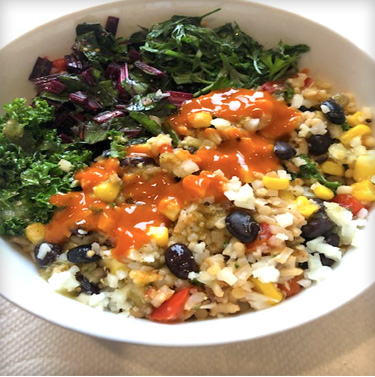It’s exciting for chefs when we get to broaden our mindset beyond only using the most ideal parts of an ingredient and challenge ourselves to be creative with the entire ingredient.
Being a classically trained chef, I am also very lucky to have been in the middle of the early American and Global Regional food revolution. This revolution challenged the classic norms of replicating exact classical recipes and refocused on authentic, in season local ingredients, techniques and cooking methods. That kicked off an amazing journey for me.
I have been blessed to travel globally, immerse in local food culture and learn from the experts. This has made me a strong advocate for authenticity and sustainability.
Upcycled Cuisine is not just another fad, it’s an incredible opportunity for chefs to take the next step and lead sustainable ingredient innovation. I feel Upcycling is simply a term of looking at the entire possibility of any ingredient, then using our culinary training and imagination to create delicious recipes that tell a story. Don’t shy away from bruised or damaged fruits or vegetables, there is usually still plenty of usable material that is likely at its peak ripened flavor. Work with local farmers to take all they have and use your imagination to transform them into your signature relishes and chutneys or nutritious enhancements in your vegetable, rice and noodle bowls.
There are many examples of Upcycled foods showing up on supermarket shelves as the manufacturers embrace this movement. As chefs and operators, taking a slightly new view of zero waste and what could be done with every ingredient can be profitable as well as sustainable. I have seen some great ideas such as saving the tops and peelings from vegetables, extracting the juice and then drying the remaining pulp to use as crisp intense crumble toppings or a natural colored vegetable seasoning. Use the vegetable tops, stems and trim to add color, texture and added nutrition to your Grain and Riced Vegetable Bowls. Using one of our Custom Culinary Gluten Free Vegan Ready to Use Sauces (Al Pastor or Tomatillo Serrano) or Vegetable Liquid Stock Concentrate as the complete vegetable flavoring.

Use ethnic fermentation and pickling techniques to transform stems and trim into unique signature accompaniments. Vietnamese style pickled broccoli stems, radishes and root vegetables are great for Bahn Mi Sandwiches, and Latin-style pickled red onions and watermelon rind is a unique compliment to Street Tacos or Burgers.
Another great idea I‘ve seen recently is Crispy Fry Root Vegetable Trim and Potato Skins tossed with your favorite seasoning and served with flavored cheese or your favorite dipping sauces for a snack or bar food.
Make it a personal challenge to look at your typical food prep and production- what’s not being used that could be? Could you partner with a local farm or butcher and purchase whole vegetables or primal cut meat? Select a few ingredients and go for it! The result will likely be an interesting addition to your menu that will bring upcycling to life and add profits to your bottom line.
These are only a few ideas of what a creative operator can do to truly upcycle every ingredient in your kitchen. I strongly feel this is just the beginning of creative sustainability that will be the industry norm in a few short years.
We want to hear how you are Upcycling ingredients in your operation!!

Scott Gillbert CEC
Corporate Executive Chef
Custom Culinary, Inc.
CRAVING MORE? CHECK OUT THESE SIMILAR POSTS

Finding Ways to Stretch Your Sauces
In the current state of our industry, ingredient versatility is key. Discover unique ways to stretch sauces across dayparts, menu parts, and cuisines.

Upcycled Cuisine
Discover how tackling the 18% of national food waste generated by the restaurant sector can unlock opportunities to reduce waste while boosting your bottom line.